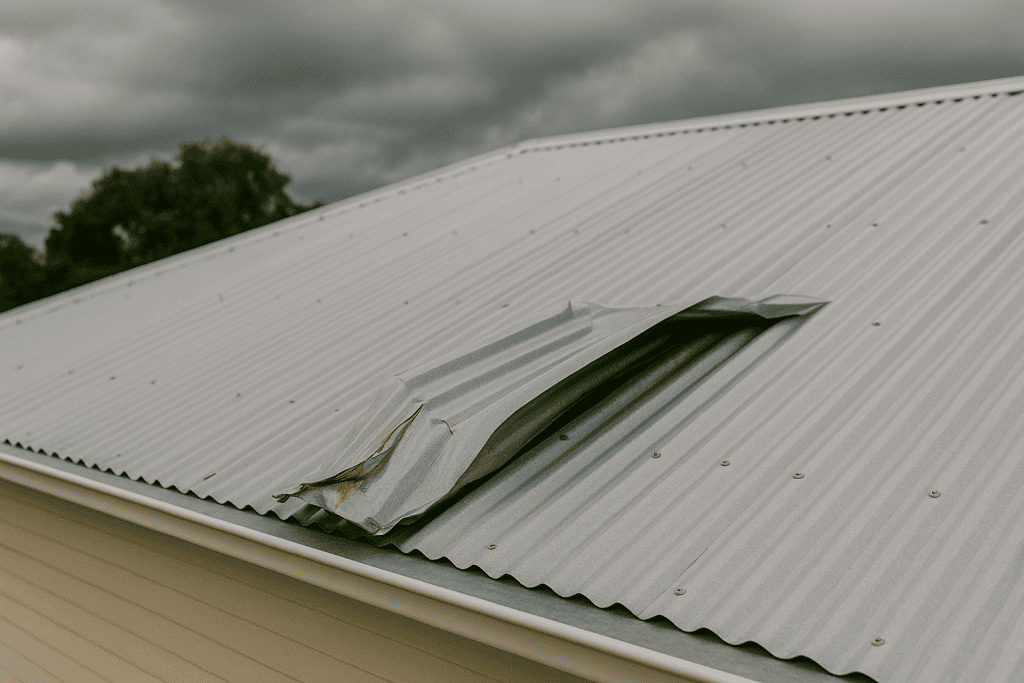If you want to live in your place and protect it from any hazards, it’s crucial to learn more about fighting the reasons behind a dripping roof and how to improve your house’s roofing system for greater efficiency in the local climate. Repeated patch repairs might not be the best answer, especially if water damage zones are widespread and severe. If roof repairs happen more than once a year, replacement is likely overdue.
Understanding Roof Replacement in Australia
What is roof replacement? In a nutshell, this process involves the removal of old roofing materials and the installation of a new system. Common causes for this decision include the leakage of roof, storm damage, the end of its lifespan, etc. It is a nice call to boost the energy efficiency of your space and improve the resale value of your property in Australia. However, you can’t take it lightly: Australian climate zones affect material choice, to say the least, — some options wear faster than others. In addition, it’s a must to adhere to local safety standards and building codes.
How Roof Replacement Differs from Roof Repair
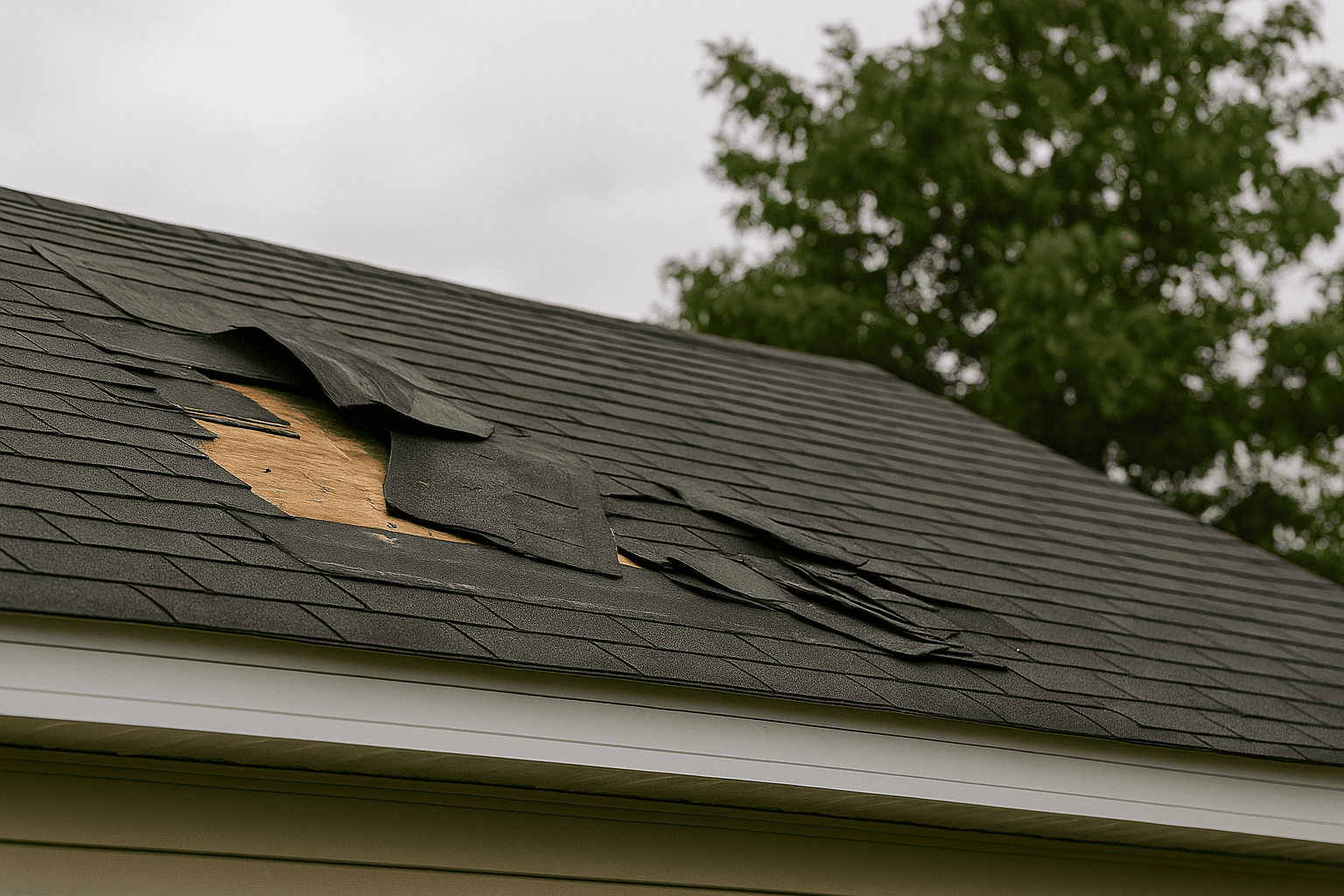
Fixing roofing leaks can go two ways. Here is a quick comparison to deepen your understanding of their nature:
- Scope of work — roof replacement is a more demanding project to install the entire system from scratch, while roof repairs target specific damaged areas.
- Cost — a lot depends on the state of your roofing system. If leaks are consistent, repairs may be less advantageous than they might seem at first. On the other hand, the upfront price for roof replacement is significantly higher.
- Time required — obviously, repairs are faster and can be completed in a matter of a few hours, depending on the scope of work.
- Best for — while repairs are ideal for fixing minor issues within the system (for instance, small leaks), roof replacement is the right choice for aging roofs or addressing extensive damage.
Common Roofing Materials in Australian Homes
When it comes to solving the problem of the leakage from roof, don’t miss out on the opportunity to learn more about the ways to modernize your house’s appearance and improve its self-protection potential in Adelaide. Here are a few common solutions:
- Slate roofing;
- Terracotta tiles;
- Concrete tiles;
- Zincalume designs;
- Colorbond steel.
Key Signs You Need a Roof Replacement
If your roof shows severe wear and tear signs, standard repairs might not be enough. Don’t kick this issue into the long grass, especially if the leak on the roof constantly reappears after getting fixed. You might be wondering, “How do I find a leak in my roof?” Aside from inspecting the roof itself, check the indoors to spot any musty odour, mould, stains, etc. Overall, the selection of signs that make you take action as soon as possible boils down to the following:
- Leaks and water damage — ongoing issues that highlight the fact that your roofing system is no longer effective.
- Sagging roof structure — it’s a typical tell-tale sign for severe water damage.
- Broken or missing tiles or sheets — in this case, your system is more vulnerable to water damage and is in a weakened state.
- Mould, moss, or algae growth — simply put, these are the symptoms that speed up the process and hold moisture in the space.
How the Australian Climate Affects Your Roof
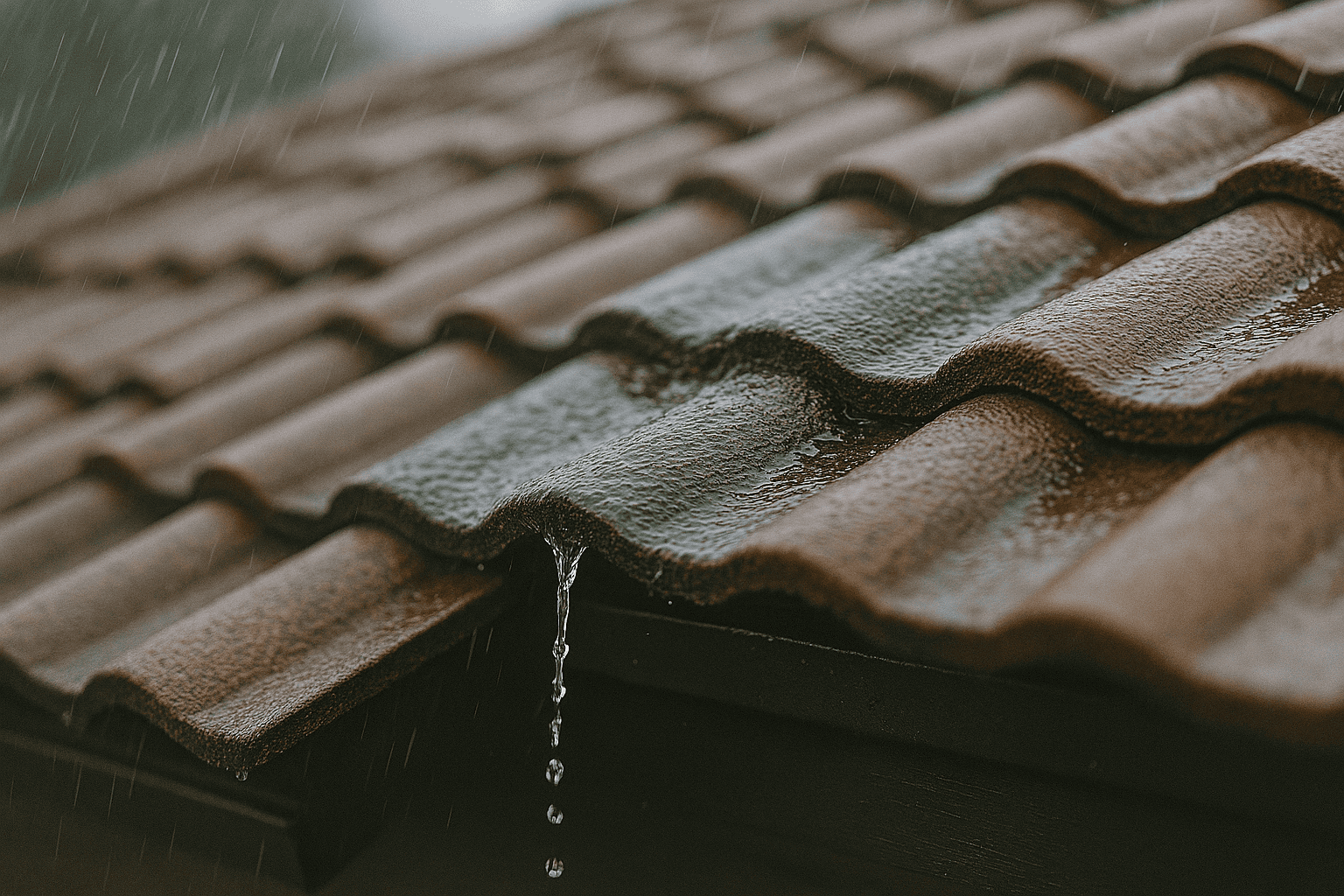
In Australia, a water leak from the roof isn’t the only concern to address. It’s also essential to understand how the local climate challenges your roofing system and come up with appropriate countermeasures to boost its lifespan:
- Impact of harsh sunlight and UV rays — in the long run, these will damage the system’s waterproofing and lead to cracked materials and faded colours.
- Heavy rain, storms, and hail — aside from drainage issues, these weather conditions may result in several broken tiles, dents, and new leaks.
- Coastal salt air — for homes located near the ocean, this special breeze may speed up the signs of corrosion and negatively impact the overall system’s longevity.
Lifespan of Different Roofing Materials in Australia
The closer your roofing system is to the end of its lifespan, the more likely issues like water leak roof become. With the right maintenance, timely repairs, and a smart choice of the material, you can delay the moment when roof replacement is knocking on your door again:
- Colorbond and Zincalume — from thirty to fifty years.
- Tile roofs (concrete or terracotta) — with upkeep, from forty to sixty years.
- Slate roofing — it may be one of the most advantageous options in terms of its longevity, but it’s not as effective for the Australian climate as alternatives on the list.
Metal Roofs (Colorbond and Zincalume)
They tend to degrade faster when exposed to coastal salt air, leading to water dripping from roof and other issues. On the other hand, if you prevent Colorbond roof leaking, these are high-quality materials that shouldn’t be overlooked:
- Pest-proof;
- Fire-resistant;
- Lightweight and pretty simple to install;
- Zincalume for budget-friendly projects;
- Colorbond for enhanced aesthetic appeal of the space with multiple colour options within your reach.
Metal roofs require proper insulation. Otherwise, not only may they transfer heat faster, but they may also be noisy during hail or heavy rain.
Concrete and Terracotta Tiles
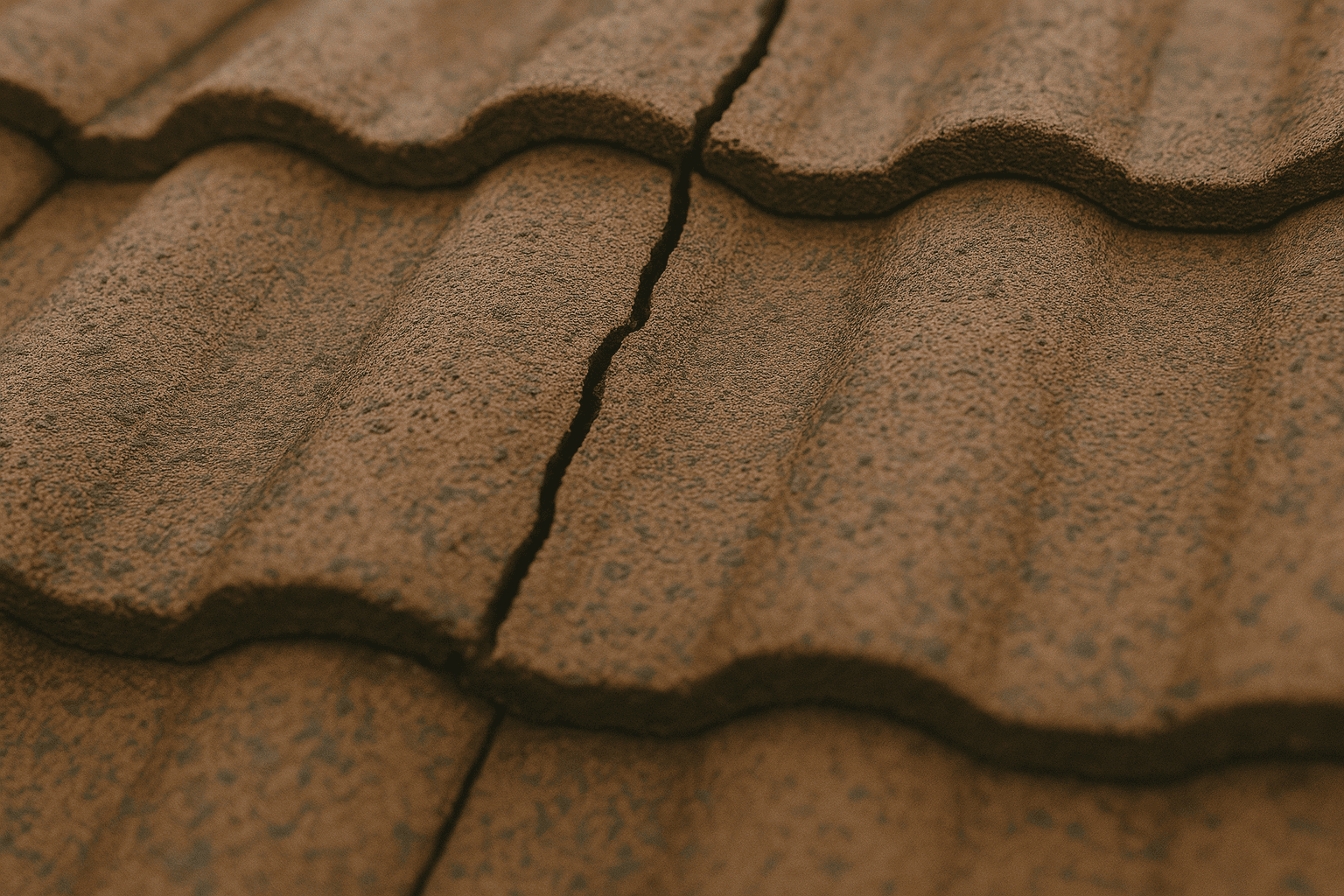
To minimize the risk of roof damage and ceiling leaks, you will need to regularly clean this roofing system — a great measure against moss and algae growth. It is a must to ensure a strong and durable roof structure before opting for concrete and terracotta tiles, as they are heavy, with a labour-intensive installation strategy in mind. Nonetheless, such roofs are extremely weather-tolerant, feature high-end thermal insulation, and preserve their natural appeal pretty well over time.
Asbestos Roofs (and Why They Must Be Replaced)
Asbestos roofs aren’t the best choice in Australia due to serious health, legal, and practical concerns — it’s something beyond their capacity to protect themselves from roof leaks in heavy rain. Roof replacement is a must:
- Such systems are heavily regulated and legally restricted.
- The smallest area of water damage is a big “no” since asbestos roofs may release harmful substances in this case.
- They drastically reduce the resale value of your property.
- They are also extremely challenging to maintain and aren’t covered by insurance in most cases.
Overall, modern metal or tile options are safer alternatives.
Best Time of Year for Roof Replacement in Australia
To fix a leaking ceiling before the right season or not to fix — that’s the question. In Australia, you have to consider ever-changing weather conditions to streamline your project without overlooking its potential benefits and hazards along the way:
- In the spring, it’s pretty simple to handle roof replacement tasks — weather conditions are quite favorable.
- For those living in northern regions, the key strategy is to avoid the cyclone season.
- Doing the job during the so-called dry months prevents interior damage.
- It’s better to refrain from any operations in the mid-rainy season. Delays caused by heavy rain and storms may increase labour costs, too.
Ideal timing for roof replacement isn’t universal across Australia. Schedule this project according to your climate zone and season.
Cost of Roof Replacement in Adelaide
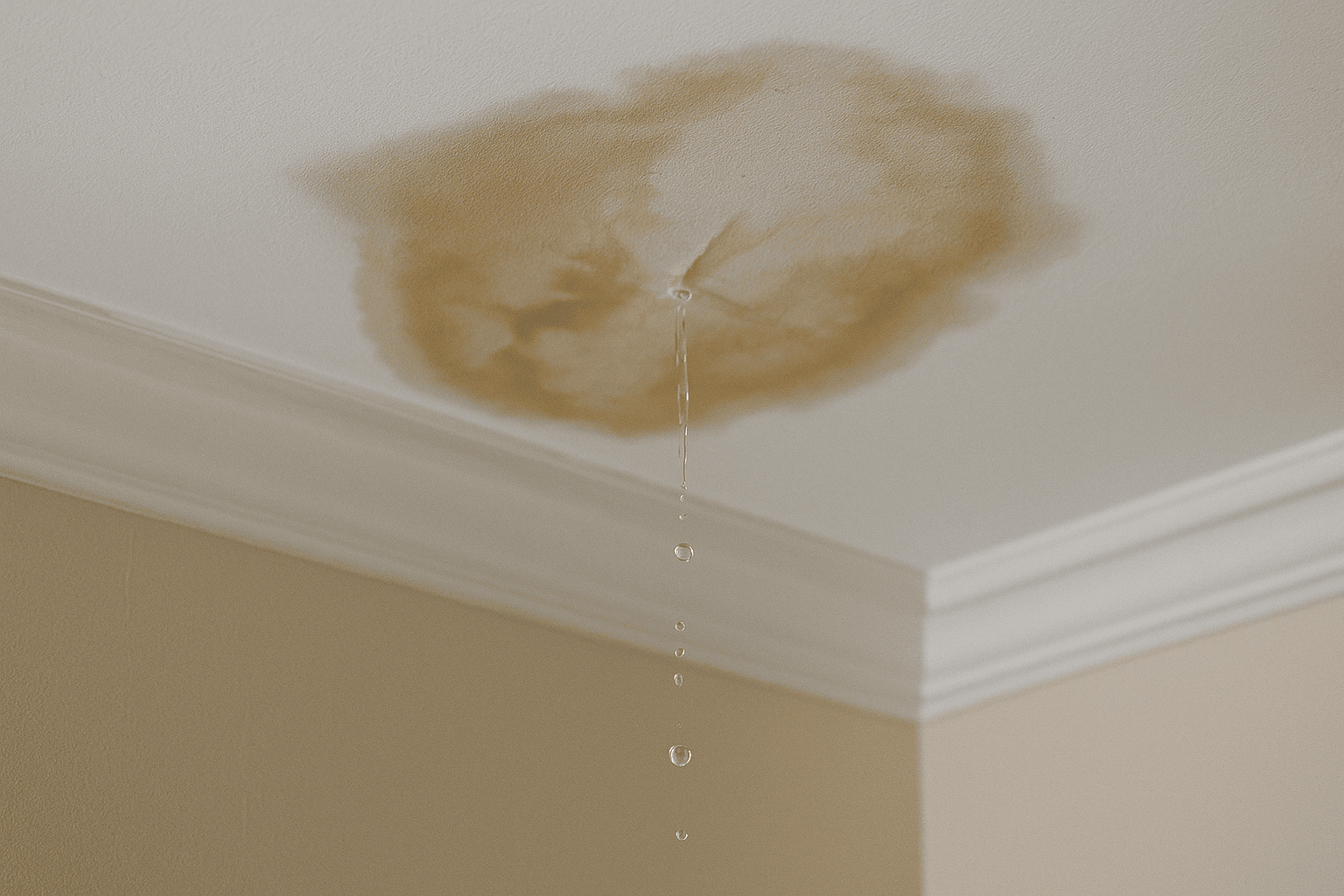
Changing roofs will be more expensive than a simple repair. Still, it is a more cost-effective strategy to solve severe water leaking from the roof and other age-related alterations in the system. Consult with a licensed and legal operator in the market for a tailored estimate — the KompaqRoofing team backs you up with transparent prices and personalized services.
The project’s cost may range from $8,000 to $20,000 and higher, depending on the scope of work and other factors that influence the associated expenses:
- Roof size and pitch;
- Material type;
- Structural repairs;
- Removal of the old system;
- Access difficulty;
- The project’s complexity, etc.
Average Cost by Roof Type
Switching from one roofing system doesn’t only depend on their characteristics but prices, too. Consider the potential cost of repairs like roof leaking water for the chosen type, among other maintenance-related matters, to qualitatively estimate the project’s value from short-term and long-term perspectives. Concrete tiles are long-lasting and pretty cost-effective over time, but any dents and cracks may increase the risk of a leaking tile roof. In comparison, metal roofs are usually more affordable and lightweight. On the other hand, they require proper insulation. Whichever roofing type you consider, the expenses start at $10,000.
How Long Does Roof Replacement Take?
If you want to forget about a water leak from roof and other concerns, consider roof replacement. How long does it take to replace a roof? Time estimates vary by chosen type and whether any crucial structure modifications are required:
- Metal roofs — up to four days in the best-case scenario.
- Terracotta or concrete roofs — around a week.
- Slate or more complex designs — up to two weeks.
If something goes wrong, the project’s duration will increase:
- Safety precautions for multi-level or steep roofs;
- Structural repairs or additional wind damage roof repairs;
- Old roofing removal;
- Weather-related delays.
Preparing for a Roof Replacement
When you work with professionals like KompaqRoofing, a lot of tasks can be freely assigned to the team — you won’t need to source supplies to fix ceiling leakage, for example. Still, you have to prepare the space:
- Protect the interior from dust and dirt.
- Clear the driveway — move your vehicle away.
- Make sure you notify your neighbours about the project in advance.
- Check if there are any ceiling-mounted pieces or valuables on the walls that should be removed before the roof replacement project starts.
What Happens During a Roof Replacement?
Here is a brief breakdown of the key elements of the process to minimize the risk of water damage in roof and other hazards by roof replacement:
- The site setup.
- The removal of the old system.
- A professional inspection of the roof’s structure.
- The installation of a waterproof barrier.
- Works to secure the framework before the placement of the material, be it a metal sheet or tile.
- The new roof installation itself.
- The sealing of edges and other features.
- The post-installation inspection.
- The clean-up and disposal of “leftovers.”
Post-Replacement Maintenance Tips
Regular roof inspections are a must. The same goes for gutter cleaning — you will be another step away from water roof damage in roof this way. For extra peace of mind and a personalized preventative maintenance checklist, schedule your appointment with professionals for up-market roof inspections.
Why You Shouldn’t Delay Roof Replacement
The short and long answer is simple — don’t let water damage roof and other hazards ruin other systems of your house, both aesthetically and functionally. It may increase the cost of repairs and void insurance coverage if you don’t address the problem on time. Besides, you will face higher emergency repair costs if things collapse suddenly.
Switching to a new roof leads to a better and more protected life in your home, including an increased value and greater street appeal. Don’t delay roof replacement and improve its insulation and other features when the time comes — a cost-effective strategy at its core.
If you don’t know how to get started, cooperate with a local roofer. KompaqRoofing can become your trusted partner. Stay in touch for a free estimate and a hassle-free first step to an upgraded home with a new roofing system.
FAQs
How do I know if I need a new roof or just repairs?
Inspect your roof to identify signs of widespread roof water damage, such as sagging and frequent leaks. They will imply that something is wrong with its structural integrity, so replacement is needed instead of frequent but ineffective repairs.
How long will my new roof last in Australia?
With the right choice of a material to withstand Aussie leaks and local climate conditions, it can last up to fifty years, on average.
Can I live in my house during roof replacement?
If no major structural work is involved, you can stay at your place with ease. However, please consider all aspects of this decision, including limited outdoor access, excessive noise, and dust.
Will my insurance cover a roof replacement?
Hail, storms, and other covered events have to be the reason for the replacement in this case. Otherwise, you might opt for roof leaking insurance from the start.
How can I make my roof more energy-efficient?
Insulation and reflective coatings are among the ways to consider for the desired effect.

